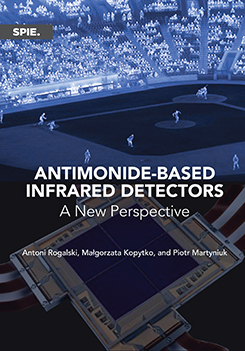
This will count as one of your downloads.
You will have access to both the presentation and article (if available).
In this paper fundamental physical properties of two material systems, HgCdTe and T2SLs, are compared together with their influence on detector performance: dark current density, RA product, quantum efficiency, and noise equivalent different temperature. In comparison with HgCdTe, fundamental properties of T2SLs are inferior. On the other hand, T2SL and barrier detectors have several advantages to include lower tunnelling and surface leakage currents, and suppressed Auger recombination mechanism. Up to date, the promise of superior performance of these detectors has not been realized yet. In the paper we present that the performance of T2SL detectors (dark current, current responsivity, and noise equivalent difference temperature) is lower than bulk HgCdTe photodiodes.
Due to stronger, less ionic chemical bonding of III-V semiconductors, these materials are attractive due to manufacturability and stability. It is also predicted that the interband T2SL quantum cascade devices will outperform the performance of the high operating temperature HgCdTe detectors.
Based on these promising results it is obvious now that the InAs/GaSb superlattice technology is competing with HgCdTe third generation detector technology with the potential advantage of standard III-V technology to be more competitive in costs and as a consequence series production pricing. Comments to the statement whether the superlattice IR photodetectors can outperform the “bulk” narrow gap HgCdTe detectors is one of the most important questions for the future of IR photodetectors presented by Rogalski at the April 2006 SPIE meeting in Orlando, Florida, are more credible today and are presented in this paper. It concerns the trade-offs between two most competing IR material technologies: InAs/GaSb type-II superlattices and HgCdTe ternary alloy system.
View contact details
No SPIE Account? Create one


